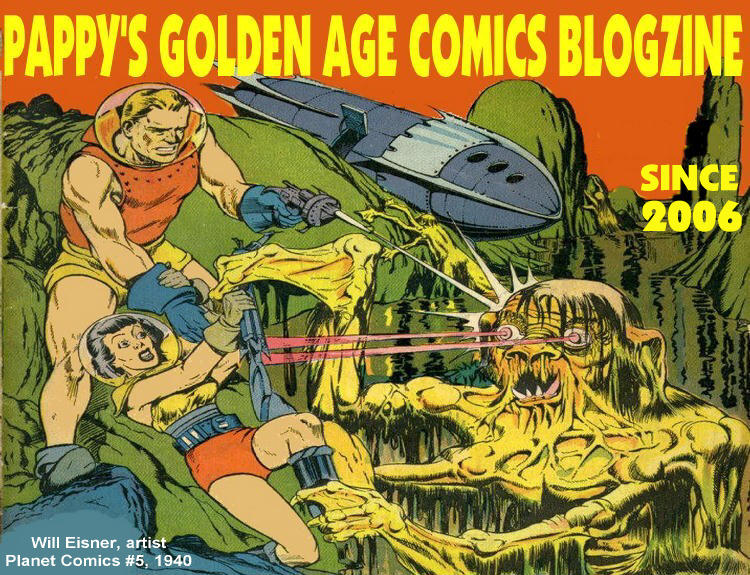 Number 580
Let loose the Wheel of war!
Number 580
Let loose the Wheel of war!
My dad, Big Pappy, said to my mother, "I'm going to the corner for some cigarettes. Want anything?" Mom shook her head no and went back to feeding my baby brother. I piped up, "Bring me a comic book!"
In the summer of 1952 I was five-years-old, too young to read but old enough to love comic books. I loved having Big Pappy read them to me. He said he'd look for a comic book, and sure enough he came home with one. Big Pap usually bought me
Little Lulu or
Donald Duck, but this time he brought home
Blackhawk with the great Reed Crandall cover of the War Wheel.

Big Pappy told me once he liked to read
Blackhawk when he was in the Army Air Corps, because he was a flier. He wasn't a fighter pilot or military flier, but he had a civilian pilot's license. He never flew after the war, and never renewed his license when it lapsed. He always regretted it. Maybe in his daydreams Big Pappy saw himself as a member of the Blackhawk team.
I was awestruck by Blackhawk and the big War Wheel. My original copy of
Blackhawk #56, September 1952, didn't survive, but I never forgot it; I jumped at it when I saw it at a Comicon in the early '80s. I was happy to see that the artwork on the lead story of my well-remembered comic was by Reed Crandall.
Wheel yourself into Pappy's memories: of his dad, Big Pappy (the Blackhawk who never was), and the comics fan Pappy came to be.










While
Blackhawk #56 was the first War Wheel story, the Wheel was too great and diabolical an invention to be disposed of in one story. It came back several times, including the Mark Evanier/Dan Spiegle run of
Blackhawk during the '80s. This is #252, which owes something to the cover of #56.































































